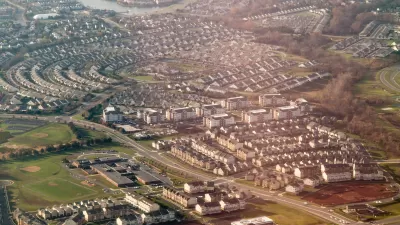The second semester in planning school at Penn is defined by a major project in which students are broken into groups, given a problem region, and tasked with, in the space of three months, coming up with a plan comparable to what professionals do in 12 to 18 months. Over those three months, the students get intimate with their designated locale, exploring every nook, cranny and underused land parcel. Helloooooooooo, Cherry Hill, New Jersey. There’s an old John Gorka song called “I’m From New Jersey.” It goes, “I’m from New Jersey/ It’s like Ohio/ But even more so/ Imagine that.” I’d bet good green cash he was driving down Route 70 when he wrote that.
The second semester in planning school at Penn is defined by a major project in which students are broken into groups, given a problem region, and tasked with, in the space of three months, coming up with a plan comparable to what professionals do in 12 to 18 months. Over those three months, the students get intimate with their designated locale, exploring every nook, cranny and underused land parcel.
Helloooooooooo, Cherry Hill, New Jersey.
There's an old John Gorka song called "I'm From New Jersey." It goes, "I'm from New Jersey/ It's like Ohio/ But even more so/ Imagine that." I'd bet good green cash he was driving down Route 70 when he wrote that.
Cherry Hill is known for, well, its mall. There's a mall. Outside of our project area. That's about it.
We're focusing on the so-called "Golden Triangle," about 1,000 acres of strip malls, office parks, sad riverfront, old housing stock, and a cemetery (or, really old housing stock). Arrive there by train and the first view you're treated to is the ass end of dead strip mall loading docks. There's an empty box where Home Depot used to be. The roads meet with sprawling cloverleaf interchanges. You can run along the river, but good luck getting to the river trail without being mauled by a semi.
So we have our work cut out for us. No big deal. Could be worse: At least we're not a few miles away in Camden.
The task is a standard suburban retrofit, with the eventual goal of mapping out a green infrastructure for the area, and then figuring out how to do smart, transit-oriented growth on top. So we're spending these first couple weeks learning the area, gathering data, researching past successful suburban retrofits, and driving loop-de-loops on the cloverleaves. Never gets old, I swear.
But as with anything, it's not that easy. When we first drove around the site, everyone in our group was struck by the sheer size of it. Sprawl gets its name from somewhere, and as sprawl goes, this part of Cherry Hill isn't even that sprawly. (Most of the housing was built before sprawl became real sprawl; residents can actually see their neighbors' houses.) And to confuse the hell out of everything, smack in the middle of the residential part of the Golden Triangle, there's a giant shed-like building covered in solar panels. I figure they're either selling solar panels or building atomic weapons.
I'm a little dubious about our ability to come up with a whole plan in just three months, but that's natural. And they haven't completely pushed us out of the nest: Our instructors are professionals from Wallace, Roberts and Todd, who are making sure we don't turn the old Home Depot site into a wax museum for '80s TV show characters (with a special exhibit on The Facts of Life called "The Wax of Life"-genius!).
But time is short, so we're looking everywhere for ideas. Know of any suburban retrofit models? Leave them in the comments. Good cities to model our plans after? I hear Columbus is lovely this time of year.

Trump Administration Could Effectively End Housing Voucher Program
Federal officials are eyeing major cuts to the Section 8 program that helps millions of low-income households pay rent.

Planetizen Federal Action Tracker
A weekly monitor of how Trump’s orders and actions are impacting planners and planning in America.

Ken Jennings Launches Transit Web Series
The Jeopardy champ wants you to ride public transit.

California Invests Additional $5M in Electric School Buses
The state wants to electrify all of its school bus fleets by 2035.

Austin Launches $2M Homelessness Prevention Fund
A new grant program from the city’s Homeless Strategy Office will fund rental assistance and supportive services.

Alabama School Forestry Initiative Brings Trees to Schoolyards
Trees can improve physical and mental health for students and commnity members.
Urban Design for Planners 1: Software Tools
This six-course series explores essential urban design concepts using open source software and equips planners with the tools they need to participate fully in the urban design process.
Planning for Universal Design
Learn the tools for implementing Universal Design in planning regulations.
Ada County Highway District
Clanton & Associates, Inc.
Jessamine County Fiscal Court
Institute for Housing and Urban Development Studies (IHS)
City of Grandview
Harvard GSD Executive Education
Toledo-Lucas County Plan Commissions
Salt Lake City
NYU Wagner Graduate School of Public Service




























